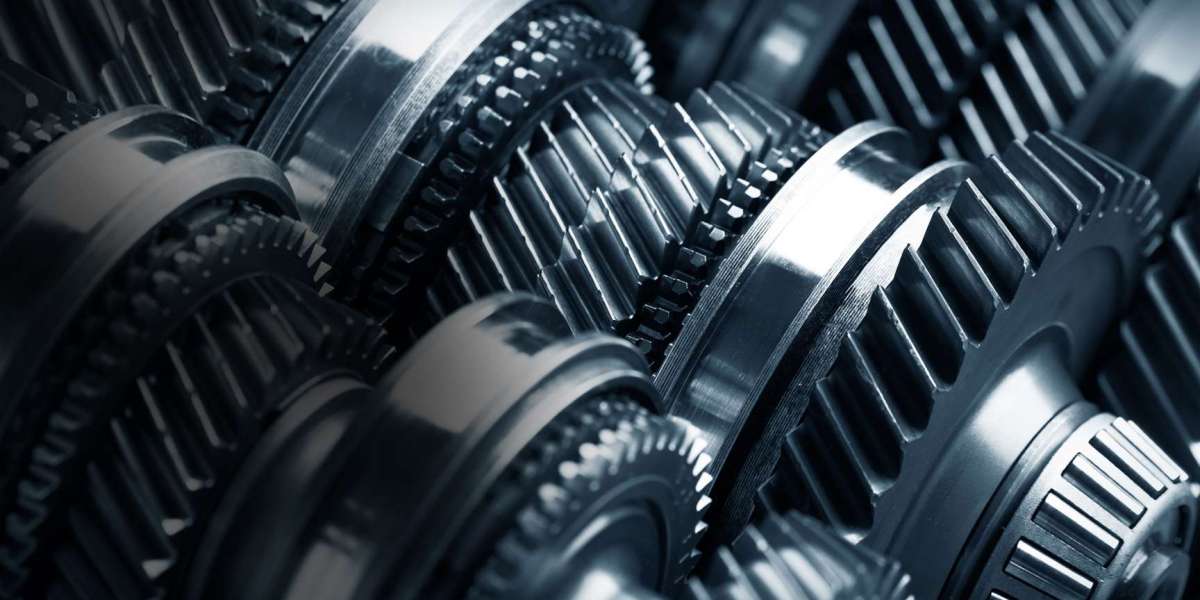Introduction
The automotive gear market is intricately tied to the strategies and innovations of original equipment manufacturers (OEMs) and Tier-1 suppliers. As the automotive industry transitions toward electrification, digitalization, and sustainability, insights from these key stakeholders provide a valuable perspective on current market dynamics, emerging trends, and the direction of future growth. Their investment decisions, technology roadmaps, and sourcing strategies are shaping the next generation of gear systems used in internal combustion engine (ICE) vehicles, electric vehicles (EVs), and hybrids.
OEM Perspectives: Driving Innovation in Gear Technology
1. Focus on Efficiency and Performance
OEMs are increasingly demanding gear solutions that offer high efficiency, reduced noise, and improved durability. The focus is on:
Optimizing gear tooth profiles for minimal energy loss
Integrating noise-reduction technologies to meet NVH (noise, vibration, and harshness) targets
Developing multi-speed transmissions for EVs to enhance range and acceleration
For example, several global automakers are now exploring two-speed and multi-speed gearboxes for electric vehicles, which can improve overall drivetrain efficiency without adding significant weight or complexity.
2. Emphasis on Lightweighting and Sustainability
Sustainability goals are pushing OEMs to adopt lightweight materials such as aluminum alloys, carbon composites, and powder-metal gears. This aligns with their broader objectives to reduce vehicle weight and lower lifecycle emissions.
OEMs are working closely with gear manufacturers to co-design components that balance performance, weight, and cost.
Lifecycle analysis (LCA) and material recyclability are now important evaluation metrics during gear procurement.
3. Localization and Supply Chain Risk Management
In response to geopolitical tensions, supply disruptions, and regulatory shifts, OEMs are increasingly prioritizing local sourcing strategies. This includes:
Partnering with regional Tier-1 suppliers
Investing in dual-source supply chains to mitigate production risks
Focusing on vertical integration for critical components, including gear assemblies
Tier-1 Supplier Insights: Meeting Evolving OEM Demands
1. Advancing Manufacturing Capabilities
Tier-1 suppliers are rapidly upgrading their facilities to support the precision engineering required for next-generation gear systems. Key advancements include:
CNC machining, 5-axis milling, and laser hardening for tighter tolerances
Integration of digital twins for real-time performance simulation
Additive manufacturing for prototyping and low-volume production
These capabilities are essential to meet OEM demands for high-performance, compact gear modules for electric drivetrains and automated transmissions.
2. Investment in R&D and Materials Innovation
Tier-1 suppliers are leading the charge in materials innovation, experimenting with hybrid materials and surface treatments to improve wear resistance and reduce friction.
Many are partnering with academic institutions and R&D labs to develop proprietary gear coatings, nano-lubricants, and thermally stable alloys.
There is also a growing interest in smart gears with embedded sensors for condition monitoring and predictive maintenance.
3. Agile Response to Market Shifts
Tier-1 suppliers are increasingly operating with greater flexibility to serve both ICE and EV platforms. This involves:
Modular gear architectures that can be adapted across multiple vehicle models
Manufacturing processes that allow for quick changeovers and customized outputs
Strategic alignment with both legacy automakers and emerging EV startups
Collaborative Ecosystem: OEM and Tier-1 Integration
The close collaboration between OEMs and Tier-1 suppliers is becoming a defining factor in the automotive gear market. This partnership is characterized by:
Joint development projects focused on integrated e-drive systems and high-efficiency transmissions
Shared investments in lightweight material supply chains and manufacturing automation
Co-innovation labs and testing centers for faster validation and regulatory compliance
This integration ensures faster time-to-market, lower costs, and products that are optimized for both performance and sustainability.
Future Outlook
Looking ahead, the combined vision of OEMs and Tier-1 suppliers will continue to shape the trajectory of the automotive gear market. Anticipated developments include:
Wider adoption of gear systems designed exclusively for EVs
Smart gear technologies for connected and autonomous vehicles
Greater use of AI and machine learning in gear design, testing, and predictive maintenance
Companies that foster strong OEM-supplier relationships, invest in flexible production systems, and focus on innovation will be best positioned to lead the future of gear technology.
Conclusion
The evolution of the automotive gear market is being heavily influenced by the collaborative efforts of OEMs and Tier-1 suppliers. As these stakeholders work together to meet the demands of electrification, efficiency, and sustainability, they are reshaping the gear landscape through innovation, material science, and advanced manufacturing. Understanding their priorities and strategic initiatives offers deep insight into where the market is headed and how businesses can align to seize new opportunities.








